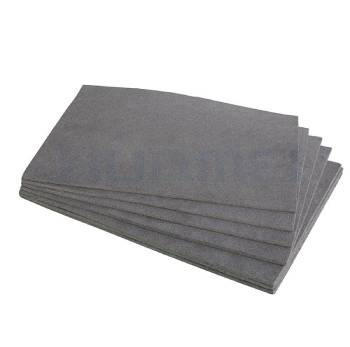E-mail: marketing@hbhuamei.com
One of the most common questions we get asked is how thick should acoustic foam be? This is a difficult question to answer as it depends on a variety of factors including the size of the room, the type of acoustic foam and the desired frequency response. In this blog post we will look at how thickness affects absorption and provide some general guidelines for those looking to purchase acoustic foam panels.
Sound absorption is a measure of the ability of a material to reduce the sound energy transmitted through it. Acoustic foam panels are effective at absorbing sound as they consist of small cells that trap and dissipate sound energy. The thicker the acoustic foam panel and the more cellular it is, the more effective it is at absorbing sound.
Thinner acoustic foam panels absorb high frequencies better, while thicker panels also absorb lower frequencies. This is because the higher frequencies have shorter wavelengths and pass through the thinner panels more easily. Thicker acoustic foams can absorb the entire frequency range from 125 Hz and above, making them ideal for bass traps.

The noise reduction factor, often referred to as the NRC of a material, is simply a measure of how much sound or sound energy a material can absorb. The following formula will help us to explain what the material's NRC tells us.
NRC = number of divisions absorbed/number of divisions reflected
The NRC will be in decimal format. For example, suppose a material has an NRC of 0.30. We are talking about a material that absorbs 30% of the sound energy and reflects 70%.
Materials typically have different NRC levels across the spectrum. The total NRC of a material is calculated by averaging the individual NRCs for each measured frequency range.
The thicker the insulation foam, the higher the NRC. Also note that the thinner 1" and 2" thick panels are ideal for absorbing high frequencies, while the thicker foams and bass traps are better suited to absorbing low end noise and bass.
Start with the first reflection point on the horizontal axis. If you are not sure where it is, sit in your listening position and imagine where the sound from the speaker is coming from to your sidewalls and bouncing back to your position. Acoustic treatment here is important as it will improve your stereo width and give you a clear sound image.

You should consider placing some acoustic treatment between the speakers and the front wall. Applying acoustic treatment here will help reduce reflections from the back of the speakers. This is a tricky area, as boundary interactions can cause a significant drop in low and mid frequencies; however, for most home studios it is best to place the speakers as close to the wall as possible, as recommended by the manufacturer. If there is any space between the wall and the speakers, place acoustic foam here.
If possible, install some acoustic foam in various corners of the room. This can be done between two horizontal walls or even between the ceiling and the side walls. This will inherently create a large air gap behind the foam. This may be the start of your absorption of the low frequency resonances mentioned above. As the studio expands, you will need to add larger and thicker absorbers in the corners to further deal with bass resonances.
If you have a drop ceiling, the next suggestion is the simplest. Your goal is to create an acoustic 'cloud' that hangs a few inches from the ceiling, above your listening position or instrument. This is similar to the first suggestion, as you are applying acoustic treatment to the first reflective point above you.
Acoustic treatment equipment can also be placed directly behind you on the back wall of the room. A sofa in this position is also very helpful - recall that any soft, porous material will absorb sound.
For more information, or to order your acoustic foam panels, contact us today!
Copyright © Huamei Energy-saving Technology Group Co., Ltd. All Rights Reserved | Sitemap | Privacy Policy
Insulation solutions LIST: Insulation solutions LIST